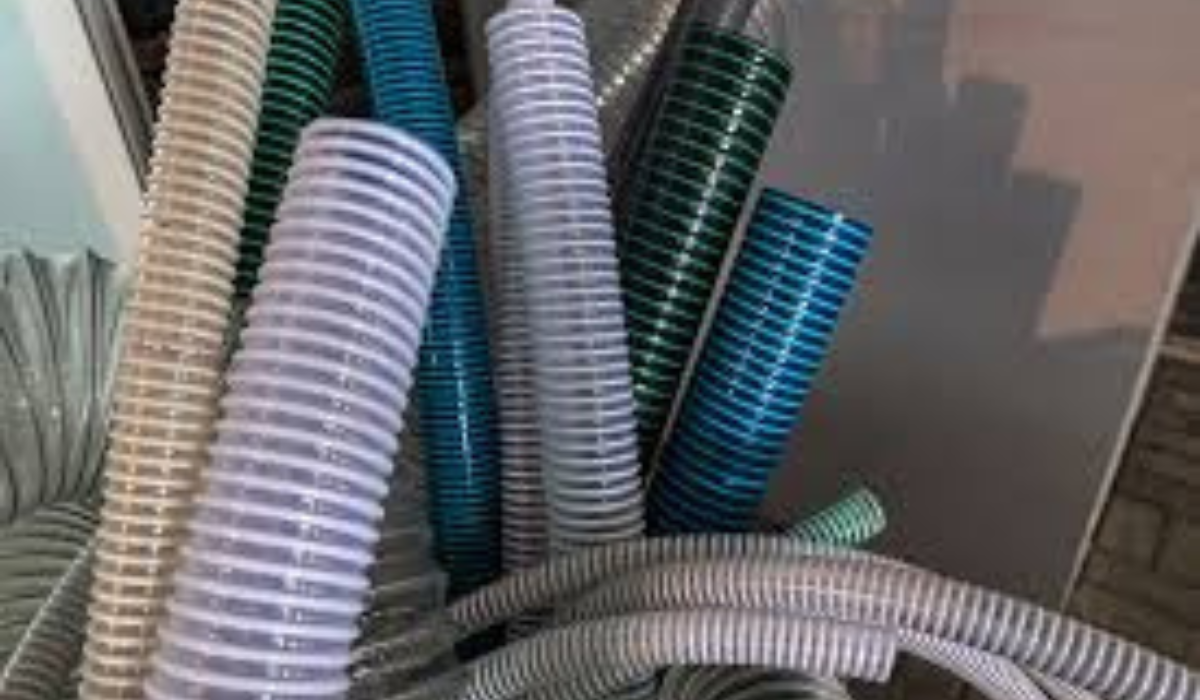The maximum installed length of a flexible air connector is: When it comes to ensuring the optimal performance of an HVAC system, knowing the limitations of components like flexible air connectors is key. One critical specification is the maximum installed length of a flexible air connector. This article will explore the guidelines, standards, and best practices surrounding flexible air connectors to ensure your system functions efficiently.
What is a Flexible Air Connector?
A flexible air connector is a type of ductwork used in HVAC (Heating, Ventilation, and Air Conditioning) systems to transport air between the air handler and different sections of a building. Unlike rigid ducts, flexible air connectors are more adaptable, making them ideal for installations where space is limited or where ducts must navigate tight turns. These connectors are generally made of wire-reinforced material and coated with a durable exterior, such as fiberglass or metal foil.
The Maximum Installed Length of a Flexible Air Connector
According to the Sheet Metal and Air Conditioning Contractors’ National Association (SMACNA) standards, the maximum installed length of a flexible air connector is 14 feet. Beyond this length, the efficiency of the system can be compromised due to factors like increased pressure drop, airflow restrictions, and the potential for structural weakness in the connector itself.
Flexible air connectors are typically used in small runs to connect two rigid duct sections or to navigate complex spaces where rigid ducts would be impractical. However, it’s essential to adhere to the recommended maximum length to avoid performance issues.
Why the Maximum Length Matters
1. Airflow Efficiency
The longer the flexible air connector, the higher the airflow resistance. Flex ducts tend to have higher friction rates than rigid metal ducts, which means that the longer the duct, the harder it is for air to travel through it efficiently. When connectors exceed the maximum installed length, the static pressure increases, reducing airflow and causing the HVAC system to work harder to maintain temperature levels.
2. Energy Consumption
When airflow is restricted due to excessive duct length, the HVAC system consumes more energy to push air through the connectors. This not only reduces the efficiency of the system but also increases energy costs over time. Keeping flexible air connectors within the recommended 14-foot length helps maintain energy efficiency.
3. System Durability
Flexible air connectors can sag or develop bends when they are too long, which can restrict airflow even further and put additional strain on the system. Over time, this can lead to wear and tear, reducing the lifespan of the system and necessitating costly repairs or replacements.
Best Practices for Installing Flexible Air Connectors
1. Keep the Ducts Short
Wherever possible, limit the length of flexible air connectors. Although the maximum installed length is 14 feet, it is advisable to use flexible connectors for even shorter runs to maintain optimal airflow. If you need to cover a greater distance, use rigid ductwork to ensure the efficiency of the HVAC system.
2. Minimize Bends and Kinks
Flexible air connectors should be installed in a straight line to avoid sharp bends or kinks, which can further restrict airflow. If bends are necessary, make sure they are as gentle as possible, maintaining a radius that allows for smooth air movement.
3. Secure Proper Support
Flexible air connectors should be properly supported to prevent sagging, which can reduce airflow. Installing support brackets or straps at regular intervals ensures that the duct remains straight and effective.
4. Insulate the Connectors
If the flexible air connector is used in an environment where temperature control is critical, insulating the duct can help maintain temperature and avoid heat loss or gain. Proper insulation also prevents condensation, which can lead to moisture buildup and mold growth.
Differences Between Flexible Air Connectors and Flexible Ducts
While the terms flexible air connector and flexible duct are often used interchangeably, there are important differences between the two.
Flexible Air Connectors
- Typically used for shorter runs.
- Limited by the 14-foot maximum length.
- More suitable for connecting two rigid ducts or navigating tight spaces.
Flexible Ducts
- Can be used for longer runs.
- Usually subject to manufacturer-specific guidelines regarding maximum length.
- Installed in areas where longer lengths are necessary, but airflow efficiency is still critical.
It’s important to distinguish between the two when planning an HVAC installation, as the limitations and uses for each vary significantly.
SMACNA Guidelines on Flexible Air Connectors
The Sheet Metal and Air Conditioning Contractors’ National Association (SMACNA) provides detailed guidelines for the installation of flexible air connectors. These guidelines emphasize the importance of keeping flexible air connectors under 14 feet and ensuring proper installation techniques to maintain the integrity of the HVAC system.
Key Points from SMACNA Guidelines:
- Use flexible air connectors only when necessary to bridge gaps between rigid ducts.
- Avoid using flexible connectors in environments where they may be subjected to heavy loads or excessive moisture.
- Ensure that fire safety regulations are followed, as flexible air connectors should not be installed through fire-rated walls.
Limitations of Flexible Air Connectors
While flexible air connectors offer adaptability and ease of installation, they have certain limitations. Beyond the 14-foot maximum installed length, they are also less durable than rigid ductwork and can suffer from wear and tear more easily. In addition, flexible connectors have a higher friction rate, which leads to more airflow resistance compared to rigid ducts. This makes them less suitable for high-performance HVAC systems or installations where maximum airflow is required.
Common Applications of Flexible Air Connectors
Flexible air connectors are widely used in both residential and commercial HVAC installations. Common applications include:
- Connecting air handlers to rigid duct systems.
- Navigating tight spaces where rigid ducts would not fit.
- Short runs in areas with complex layouts.
By adhering to the 14-foot maximum installed length, these applications can benefit from the flexibility of the connectors without sacrificing system efficiency.
How to Determine If Your Flexible Air Connector Installation Is Compliant
Step 1: Measure the Length
Ensure that the installed length of the flexible air connector does not exceed 14 feet. If the distance is longer, consider using a combination of rigid ductwork and flexible connectors.
Step 2: Inspect for Bends and Kinks
Check that the connector is installed without sharp bends or kinks that could restrict airflow. Smooth, gentle bends are essential for maintaining efficiency.
Step 3: Check Support and Insulation
Ensure the duct is adequately supported to prevent sagging and has proper insulation if needed for temperature control.
Conclusion:
When it comes to installing flexible air connectors, following industry standards, such as the 14-foot maximum installed length, is essential for maintaining the efficiency, durability, and safety of your HVAC system. By following the guidelines from organizations like SMACNA, you can ensure that your system functions at its best and avoids the pitfalls of improper installation, such as increased energy consumption and reduced airflow.









































